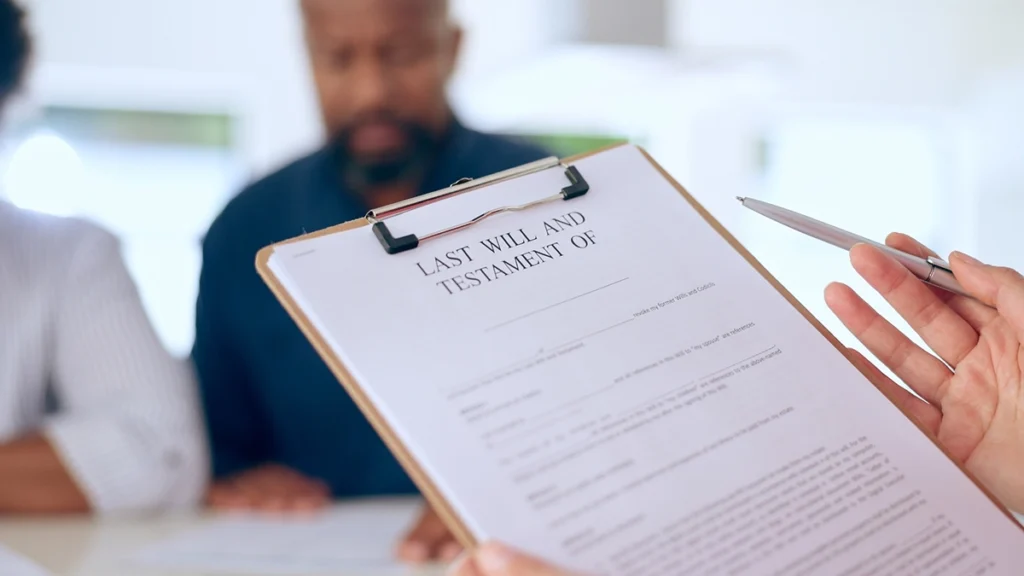For most homeowners, a house is more than a financial asset. It is a foundation of family, comfort, and security. Planning what happens to it in the future may not be easy to think about, but it is one of the most caring steps you can take.
Estate planning ensures your loved ones are protected, your wishes are honored, and your home passes on without confusion or conflict. Taking the time to plan today helps you protect what matters most and create lasting peace of mind for your family.
Why Estate Planning Matters
Estate planning is the process of arranging who will receive property and assets after death, as well as making decisions about care, guardianship, and finances. Estate planning often begins with a will, but a will alone requires probate.
Probate is the court-supervised process of validating a will, paying debts, and distributing assets. It can last months or years, often costing thousands in legal fees.
Many homeowners look for alternatives that avoid this delay and expense. That is where Lady Bird Deeds become essential.
Understanding Lady Bird Deeds
A Lady Bird Deed is a type of deed that allows a homeowner to keep full control over their property during life while naming beneficiaries who will automatically inherit the property at death.
Unlike a traditional life estate, where the owner gives up certain rights, an Enhanced Life Estate Deed preserves the owner’s ability to sell, refinance, or change beneficiaries without consent. Once recorded, the deed transfers ownership instantly upon death, avoiding probate entirely.
Where Lady Bird Deeds Apply
Lady Bird Deeds are not available nationwide. They are recognized in only six states: Texas, Michigan, West Virginia, Vermont, North Carolina, and Florida.
In these states, they are widely used as practical estate planning tools, especially for homeowners who want to keep options open during life while securing property for loved ones after death.
How Lady Bird Deeds Fit Into Estate Planning
Estate planning typically combines several tools. A will can address personal belongings, bank accounts, and guardianship of minor children. Trusts can manage complex assets or provide protection for beneficiaries. A Lady Bird Deed focuses specifically on real property, ensuring a home transfers directly to heirs.
Importantly, when properly executed, a Lady Bird Deed overrides a will for that property. This means if a will says one thing but the deed names a beneficiary, the deed controls.
The Role Of Probate
Without a Lady Bird Deed or similar planning, most real estate must pass through probate. This involves filing court paperwork, publishing notices, and waiting for creditors to make claims. Families often face delays, legal fees, and uncertainty.
By contrast, a Lady Bird Deed bypasses probate with a simple death certificate and affidavit. Families can transfer title in days rather than months.
For example, one 62-year-old homeowner wanted to secure her home for her adult son but also keep the option to sell if her health changed. She created a Lady Bird Deed, retaining full rights during her lifetime. When she later passed, her son recorded her death certificate and instantly became the legal owner, avoiding thousands in probate costs.
Experiences like this highlight why many households include Lady Bird Deeds in their estate planning strategies.
Other Estate Planning Tools To Know
Wills
A Will is the foundation of many estate plans. It allows homeowners to direct how personal property, financial accounts, or family heirlooms should be divided. However, because wills require probate, they are best paired with tools like Lady Bird Deeds for real estate.
Trusts
Trusts can hold property, investments, or business interests and direct their use before and after death. A revocable living trust gives flexibility during life, while an irrevocable trust may provide asset protection. For homeowners with multiple properties, trusts can complement Lady Bird Deeds by covering out-of-state real estate or other assets not eligible for this deed.
Advance Directives
Advance directives, such as a living will or healthcare surrogate designation, outline medical wishes if someone cannot communicate. While not about property transfer, they are critical to complete estate planning and ensure a person’s values are honored when they cannot speak for themselves.
Power Of Attorney
A durable power of attorney allows someone to manage financial matters if the homeowner becomes incapacitated. It ensures bills, taxes, and legal matters continue smoothly. Together with Lady Bird Deeds, these documents create a comprehensive safety net.
Common Misconceptions About Lady Bird Deeds
Myth: A Lady Bird Deed Removes Control
In fact, the opposite is true. With an Enhanced Life Estate Deed, the homeowner keeps full authority to sell, mortgage, or change beneficiaries. Control is not lost.
Myth: A Will Can Override The Deed
This is incorrect. When properly executed, a Lady Bird Deed controls the property regardless of what a will states. The deed has priority.
Myth: Lady Bird Deeds Cause Gift Taxes
Because the transfer does not occur until death, there is generally no gift tax triggered when the deed is signed. The property remains part of the estate until the homeowner passes away.
Myth: Lady Bird Deeds Work In Every State
They are valid only in Texas, Michigan, West Virginia, Vermont, North Carolina, and Florida. Homeowners in other states need different tools to achieve similar results.
Estate Planning And Medicaid
Many homeowners also consider Medicaid when planning their estates. Medicaid may recover costs from estates after death, a process known as estate recovery. However, because a Lady Bird Deed transfers the property instantly upon death, there is typically no property left in the estate for recovery.
This makes the deed a helpful tool for families concerned about long-term care expenses. Still, Medicaid rules are complex, and Lady Bird Deeds should be seen as one piece of the planning puzzle, not the entire solution.
Tax Considerations
For most homeowners, Lady Bird Deeds do not create immediate tax burdens. Property taxes remain the same throughout life. Upon death, beneficiaries may receive a step-up in basis, reducing potential capital gains if they later sell the home.
While not a substitute for professional tax advice, many families find this favorable compared to other forms of transfer.
Steps To Create A Lady Bird Deed
Preparing a Lady Bird Deed involves several steps. First, the homeowner decides who should inherit the property. Next, a properly drafted deed is created and signed before a notary. Finally, the deed is recorded with the county clerk. Once recorded, it is effective immediately.
Families should ensure the deed is correctly worded, as errors can create legal complications later. Because of this, professional preparation is common, even though Lady Bird Deeds are simpler than many estate planning tools.
Integrating Lady Bird Deeds With Broader Plans
A Lady Bird Deed works best when it is part of a coordinated estate plan. For example, a homeowner may use a Lady Bird Deed for the family home, a trust for investment accounts, and a will for personal effects. Together, these tools provide clarity, reduce costs, and ease transitions for loved ones.
The strength of the Lady Bird Deed is in its simplicity: it secures the home, often a family’s most important asset, while leaving flexibility during life.
Key Takeaways
- Lady Bird Deeds let homeowners keep control during life while passing property directly to heirs.
- They override a will for the property once recorded and avoid probate entirely.
- They are recognized only in Texas, Michigan, West Virginia, Vermont, North Carolina, and Florida.
- When combined with wills, trusts, and directives, Lady Bird Deeds help create a complete estate plan.



